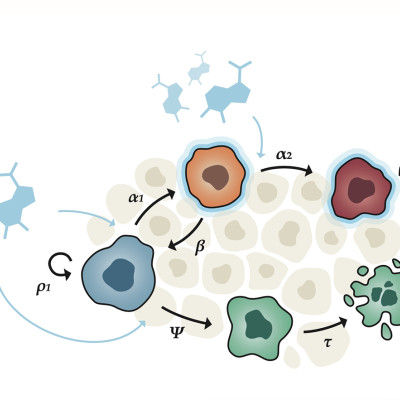Publication
Overcoming chemotherapy resistance in low-grade gliomas: A computational approach
Delobel T, Ayala-Hernández LE, Bosque JJ, Pérez-Beteta J, Chulián S, García-Ferrer M, Piñero P, Schucht P, Murek M, Pérez-García VM
PLoS Computational Biology 19(11): e1011208 (2023)
MOLAB authors
Abstract
Low-grade gliomas are primary brain tumors that arise from glial cells and are usually treated with temozolomide (TMZ) as a chemotherapeutic option. They are often incurable, but patients have a prolonged survival. One of the shortcomings of the treatment is that patients eventually develop drug resistance. Recent findings show that persisters, cells that enter a dormancy state to resist treatment, play an important role in the development of resistance to TMZ. In this study we constructed a mathematical model of low-grade glioma response to TMZ incorporating a persister population. The model was able to describe the volumetric longitudinal dynamics, observed in routine FLAIR 3D sequences, of low-grade glioma patients acquiring TMZ resistance. We used the model to explore different TMZ administration protocols, first on virtual clones of real patients and afterwards on virtual patients preserving the relationships between parameters of real patients. In silico clinical trials showed that resistance development was deferred by protocols in which individual doses are administered after rest periods, rather than the 28-days cycle standard protocol. This led to median survival gains in virtual patients of more than 15 months when using resting periods between two and three weeks and agreed with recent experimental observations in animal models. Additionally, we tested adaptive variations of these new protocols, what showed a potential reduction in toxicity, but no survival gain. Our computational results highlight the need of further clinical trials that could obtain better results from treatment with TMZ in low grade gliomas.














